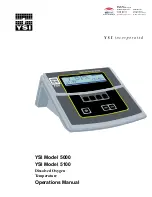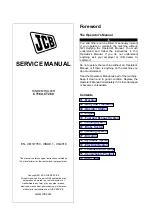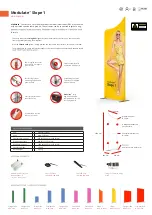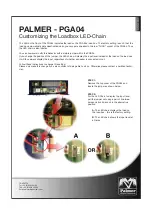
6
GB
This guide must be translated by the dealer into the language of the country of use (except if the translation is provided by the manufacturer).
For your safety, comply strictly with the instructions for use, verification, maintenance and storage.
KRATOS SAFETY cannot be held liable for any direct or indirect accident occurring as a result of use other than provided for in this notice; do not use
this equipment beyond its capabilities!
USE AND PRECAUTIONS:
An evacuation triangle (EN 1498:2006 class B) or an evacuation strap (EN 1498:2006 class A) is intended to be used to rescue a conscious adult and
allow him/her to be evacuated upwards or downwards with the help of third parties. The FA 70 005 00 evacuation triangle can also be used for self-
evacuation (by the user, without the help of a third party).
An evacuation triangle or evacuation strap may only be used by one person at a time. This equipment is not intended to be worn during normal work
activity but only in the event of an emergency and evacuation. Maximum rated load: 140 kg.
Positioning:
FA 70 005 00 (p. 3 & 4):
Place the triangle on the user and collect the three attachment points in the following sense: attaching side -
central end - attaching side, and pass a connector (EN 362) in these attachments
(Fig. 4 p. 3)
. During these operations, ensure that the
straps do not twist.
FA 70 019 00:
Pass the evacuation strap under the user’s arms, adjust the chest circumference using the buckle provided for this purpose
(see image opposite). Make sure that the strap does not twist around the torso and that the tubular comfort strap is properly positioned on
the back. After adjustment, make sure that when loaded, the adjustment buckle is between the chest and neck; if necessary, readjust before
evacuating the person.
Connect the end of the evacuation strap to the evacuation system via a connector (EN 362).
Ensure that the person being rescued is properly positioned to allow rescue operations and that he/she will not be endangered by the movement of the
strap’s webbing or rescue triangle if an unexpected incident occurs (such as a short distance drop); pay particular care to the metal elements (such as the
connector, buckle, etc.) so that they do not risk hitting the head of the person being rescued.
For safety reasons and before each use, make sure that there is no obstacle obstructing the normal deployment of the rescue system.
Rescue operations require, most of time, to make emergency intervention, so it is important that those involved are firstly formed and trained in this kind
of intervention. Be aware of the dangers of trauma caused by being suspended in mid air. The length of time the rescued person is held in the evacuation
strap (FA 70 019 00) should be as short as possible to reduce blood circulation and breathing risks.
The anchorage point of the rescue system should be strong enough, minimum strength:
12 kN (EN 795:2012).
Ensure that rescue operations limit the pendulum effect, the risk and the height of a fall.
User safety relies on the ongoing effectiveness of the equipment and full understanding of the safety instructions contained in this leaflet.
This equipment is suitable for use on site in the open air and a temperature range of -40°C to +60°C.
This equipment is
for the sole use of people trained, skilled
and in good health, or under the supervision of a trained and skilled person.
Warning!
Certain medical conditions may affect user safety, if in doubt, consult your doctor.
Sharp edges, small diameter structures and corrosion should be avoided as they may affect the performance of the webbings.
Check the condition of the rescue triangle /evacuation strap before every use:
visual inspection to check the condition of the straps (no signs of cuts, burns
or abnormal shrinkage), the seams (no visible damage), the metal parts (no deformation or rust) and that the connectors work properly.
In the event of
deformation or doubt the equipment should not be reused.
Adding or replacing any component on the evacuation triangle or evacuation strap is prohibited.
TECHNICAL CHARACTERISTICS:
Belt material:
polyester and/or polyamide.
Buckle material:
heat treated steel.
SUITABILITY FOR USE:
The evacuation triangle / evacuation strap must be used as part of a rescue system: EN341; EN1496…. It may be dangerous to create one’s own rescue
system where each safety function can interfere with another safety function. Read the recommendations on using each component in the system before
use.
VERIFICATION PROCEDURE:
The equipment has a service life of 10 years (in accordance with the annual examination by a competent person authorized by KRATOS SAFETY), but
this may increase or decrease depending on how it is used and/or the results of annual checks.
The equipment must be checked systematically in case of doubt or after a fall and at least every year by the manufacturer or his authorised representative,
to guarantee its state and thus the safety of the end-user.
The product data sheet should be completed after each annual verification.
SERVICING AND STORAGE:
(Comply strictly with these instructions)
During transport, keep the equipment in its packaging, well away from any cutting surface. Clean it with water and soap, wipe it with a dry rag and hang
it up in a well-ventilated location, to let it dry naturally and away from a naked flame or heat source; follow the same procedure for components that have
become damp during use. The metal parts should be wiped with a cloth impregnated with paraffin oil. Never use bleach or detergents. The equipment
should be stored in its packaging in a warm, dry, ventilated place, protected from sunlight, heat and chemicals.
Содержание FA 70 005 00
Страница 3: ...3 1 2 3 4...
Страница 4: ...4 5 6 7 8...






































